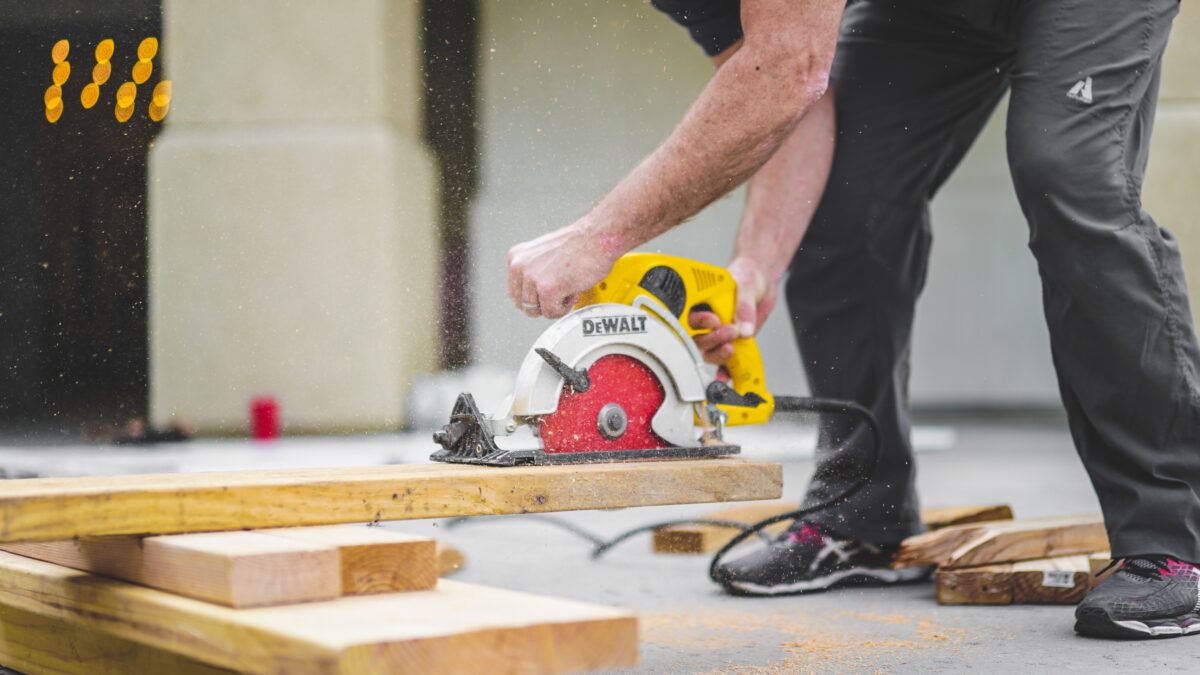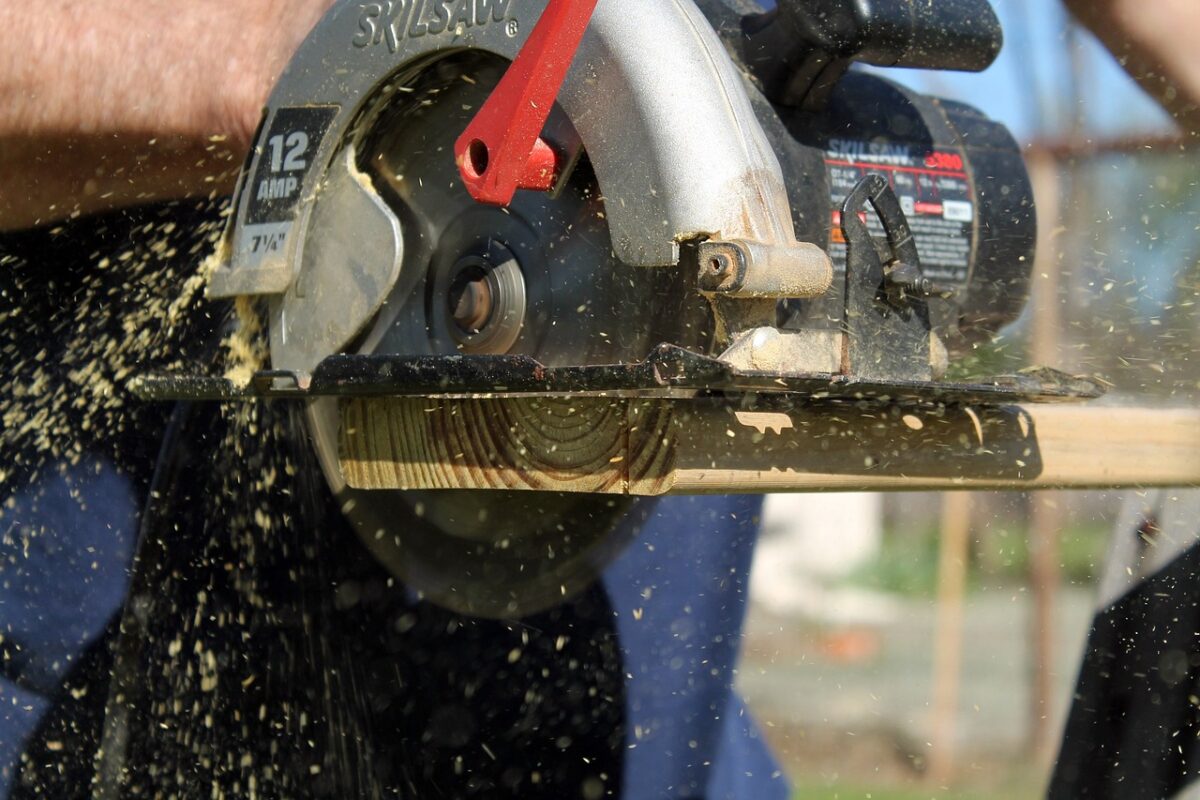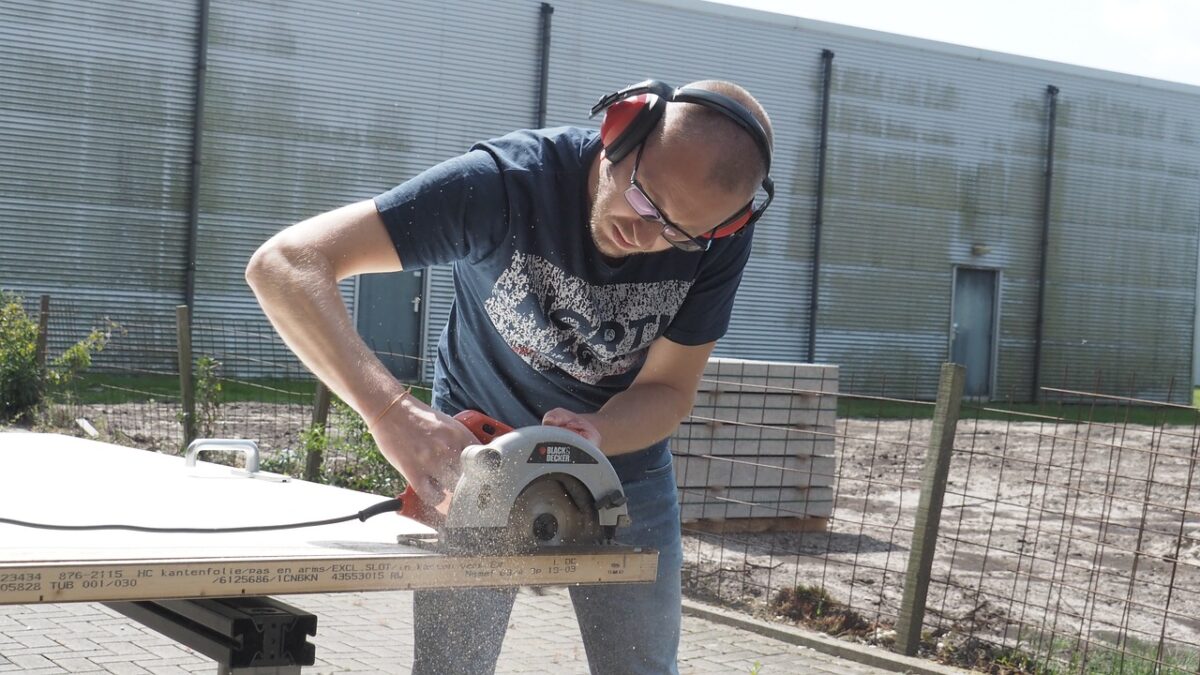When cutting laminate with a circular saw, measure and mark the laminate piece where you want to make the cut. Clamp the guide to the laminate to prevent any movement during the cut. Finally, cut the laminate slowly and steadily, allowing the saw to work without too much pressure.
With their ease of use, accuracy, and ability to reduce chipping, circular saws have proven to be an excellent choice for cutting laminate materials. In the following paragraphs, I’m giving a more in-depth guide on achieving a clean cut for your laminate. Here’s How to Cut Laminate With a Circular Saw.
Steps in Cutting Laminate Using Circular Saws
Cutting laminate with a circular saw is a simple and effective method for DIY home projects. Here is an easy guide for DIY enthusiasts.

| Steps | Actions |
| Pick the right circular saw | Choose between corded or cordless, and pick the right blade size |
| Select the appropriate blade | Choose the ideal tooth count, material, and coating |
| Prepare for the cut | Measure and set up a guide |
| Take safety precautions | Wear gloves, goggles, and a dust mask |
| Make the cut | Cut along the marked line with a steady hand |
Step 1: Choose the Right Circular Saw for Laminate Cutting
With the correct type of circular saw and blade size, cutting laminate for your DIY home project should be a breeze.
Corded vs Cordless Saws
Saws are among the tools I believe every household needs. However, when cutting laminate, both corded and cordless circular saws can do the job. I personally prefer corded saws as they provide continuous power and generally have higher torque capabilities.
Meanwhile, cordless saws offer more mobility and are great for quick, smaller projects. It ultimately comes down to your specific needs and preferences.
Blade Size
Selecting the right blade size is crucial for laminate cutting. I recommend using a circular saw blade with at least 40 fine teeth for clean and precise cuts. This will help to minimize chipping and ensure a smooth finish on your laminate surface.
Step 2: Select the Appropriate Blade
When it comes to cutting laminate using circular saws, choosing the right blade is crucial.
Tooth Count
One crucial aspect of a blade is its tooth count, which plays a vital role in the finish of your cuts. For laminate cutting, I recommend using a blade with at least:
- 40 teeth for general cutting
- 80 teeth for a finer finish
The more teeth a blade has, the cleaner and more precise the cut will be. However, keep in mind that it might cut slower, giving you more control over the process.
Material
Different blade materials can impact durability and cutting performance.
- Carbide-tipped blades: These are known for their long-lasting, sharp edges and work well with laminate materials.
- Diamond blades: These are typically used for cutting harder materials like tile. Thus, they might be overkill for most DIY home projects.

Coating
Consider the blade’s coating, which can help reduce friction and prolong the life of your blade.
- Non-stick coatings: These help with smoother cuts and increased longevity.
- Anti-corrosive coatings: This kind of coating prevents rust and corrosion from affecting the blade.
Step 3: Prepare the Guide
Before we start cutting, it’s crucial to have accurate measurements of the laminate.
- I use a tape measure to find the proper dimensions and a straight edge or carpenter’s square to ensure straight lines.
- Once I have determined the precise measurement, I carefully mark the cutting line on the laminate using a pencil or marker.
- Creating a straight cut with a circular saw can be challenging for even the most experienced DIYers. To make this task easier, I set up a guide to ensure a steady, straight cut. I like to use a sturdy straight edge or a spare piece of wood as my guide.
- I secure it to the laminate with clamps, ensuring it aligns perfectly with the marked cutting line. This setup helps me to achieve a clean, professional-looking cut when I operate the saw.
Step 4: Take Safety Measures
Wear proper protective gear, like goggles and a dust mask, to protect your eyes and lungs from dust and debris.
Moreover, ensure the laminate material is adequately supported and secured before cutting. Lastly, keep your hands and fingers away from the saw blade.
Step 5: Make the Cut
Remember to set the saw’s cutting depth slightly deeper than the thickness of the laminate for best results. I also take care to guide the saw along the marked line at a steady pace, ensuring a smooth and even cut.

Using a Circular Saw to Cut Laminate Flooring Lengthwise
This is my usual procedure when using a circular saw to cut laminate flooring lengthwise.
- I start by measuring and marking the cut line on the laminate sheet.
- I secure the sheet to my work surface using clamps to prevent it from moving.
- After setting up the saw with the correct blade, I carefully guide it along the marked line, cutting the flooring lengthwise with a steady hand.
Using a Circular Saw to Cut Laminate Flooring to Width
To cut laminate flooring to width, I follow a similar process as cutting it lengthwise.
- First, I measure and mark the cutting line.
- Then, I clamp down the piece securely to my workstation.
- Before cutting, I ensure that my saw is fitted with the appropriate blade.
- Finally, I carefully push the saw along the marked line, making a clean and precise cut.
Using a Circular Saw to Cut Laminate Flooring Around a Curve
Working on an angled cut or around a curve can be a little tricky. However, it becomes more manageable with some practice and the proper technique.
- I start by tracing the curve onto the laminate, then making several relief cuts with a jigsaw up the marked curve line.
- After that, I use the saw to carefully cut along the curve, following the relief cuts as a guide. This may require several passes, so take your time to ensure a clean curve.
Using a Circular Saw to Cut Laminate Flooring for Uneven Surfaces
This process ensures that the newly cut laminate piece will fit perfectly onto the uneven surface, even when you need to cut at a 45-degree angle.
- When cutting laminate flooring for uneven surfaces, I begin by measuring the area and creating a template of the surface using kraft paper or cardboard.
- Once the template is ready, I transfer the shape onto the laminate sheet and cut it out using a combination of a jigsaw for curved or irregular cuts and a saw for straight cuts.
In contrast, you can also cut laminate flooring without a saw.
Related Questions
What Kind of Saw Blade Do I Need When Cutting Laminate?
When cutting laminate, I recommend using a carbide-tipped saw blade specifically designed for laminate flooring.
This type of blade is ideal because it ensures clean cuts and reduces the risk of chipping. Use a high tooth count (at least 80 teeth) and a tungsten carbide construction for smooth and precise cuts.
How to Finish and Clean the Edge When Cutting Laminate?
Among my go-to methods for cleaning the cut edge is to sand the edge with fine-grit sandpaper lightly.
This smooths out imperfections or rough spots the blade may have left behind. Lastly, remove debris and dust from the cutting process using a clean cloth or a gentle brush.
What Are Common Troubleshooting Issues When Using Circular Saws in Cutting Laminate?
One issue I often encounter when cutting laminate with circular saws is chipping.
To minimize chipping, I recommend using a blade with at least 80 teeth and a fine-toothed jigsaw blade specifically designed for trimming laminate. Adjusting the depth of the blade and using painter’s tape along the cut line can also help.
Conclusion
And there you have it — a clean and accurate cut with a circular saw! Using the right blade with at least 80 teeth and a steady hand, I’ve achieved clean, precise cuts on laminate countertops and flooring. Once you’ve mastered cutting laminate with circular saws, you’ll be ready for your next DIY home adventure.
